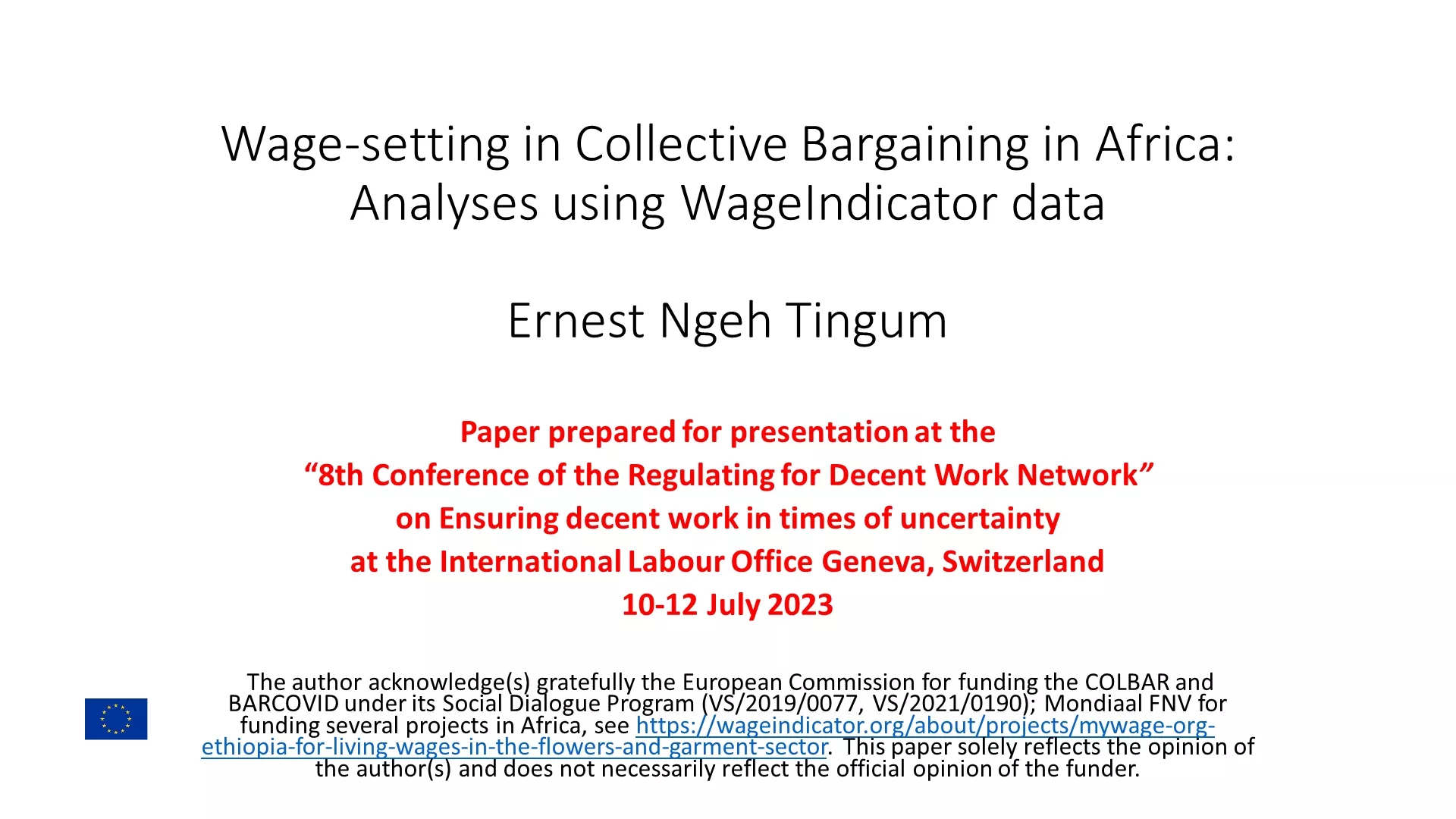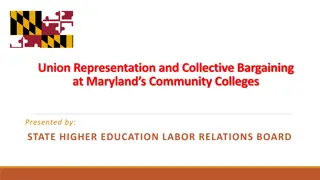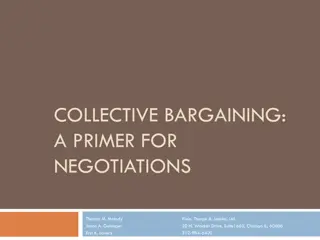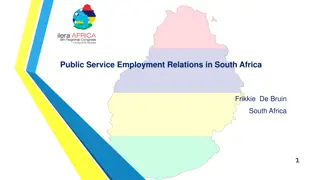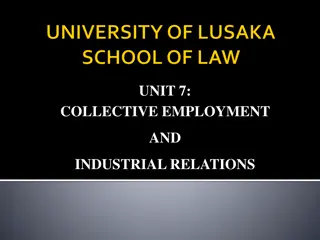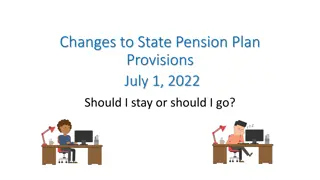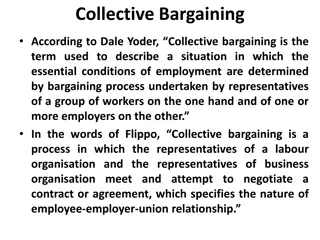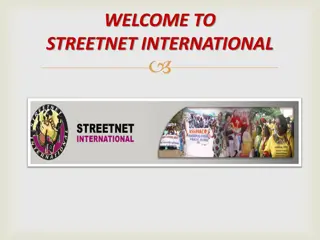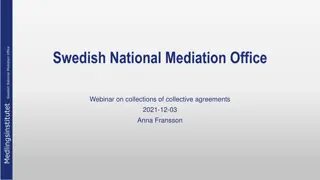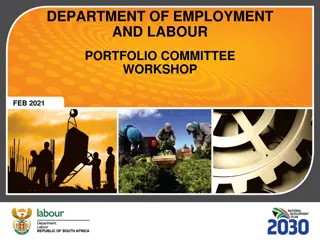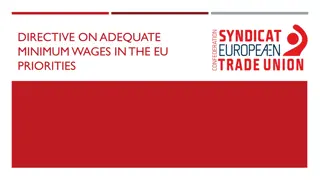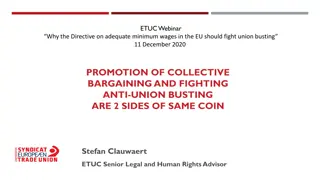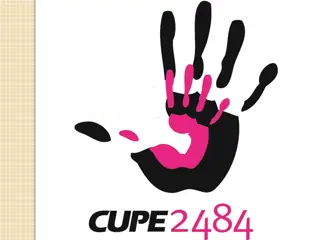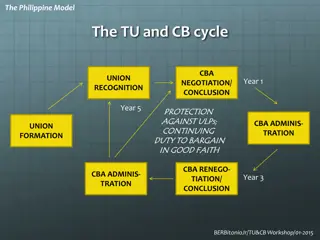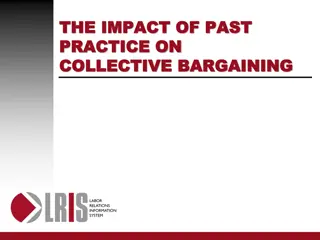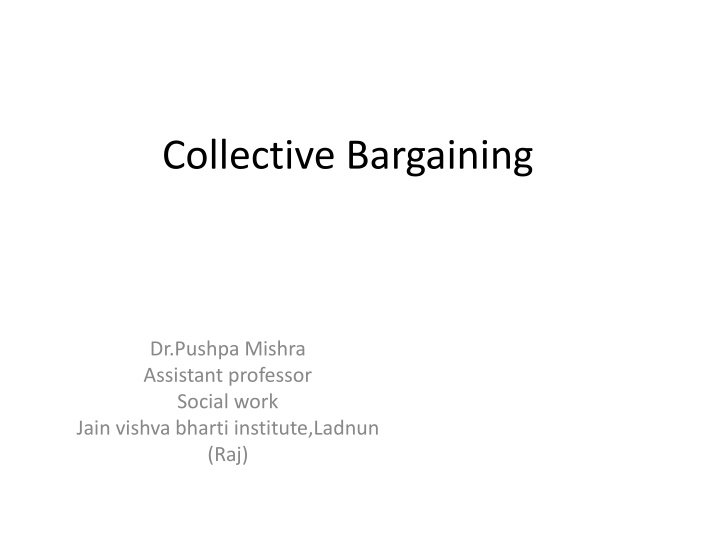
Collective Bargaining
Explore the process, definition, and objectives of collective bargaining, a negotiation aimed at regulating working conditions, salaries, and benefits between trade unions, workers, and management. Learn about the principles, forms, types, and theories associated with collective bargaining.
Uploaded on | 1 Views
Download Presentation

Please find below an Image/Link to download the presentation.
The content on the website is provided AS IS for your information and personal use only. It may not be sold, licensed, or shared on other websites without obtaining consent from the author. If you encounter any issues during the download, it is possible that the publisher has removed the file from their server.
You are allowed to download the files provided on this website for personal or commercial use, subject to the condition that they are used lawfully. All files are the property of their respective owners.
The content on the website is provided AS IS for your information and personal use only. It may not be sold, licensed, or shared on other websites without obtaining consent from the author.
E N D
Presentation Transcript
Collective Bargaining Dr.Pushpa Mishra Assistant professor Social work Jain vishva bharti institute,Ladnun (Raj)
concepts This is a process of negotiation Its aimed at agreement to regulate working salary Regulate to working condition and benefits Compensation and rights of worker It is a group action that involved trade union, representative of workers and management Involved industrial democracy It is a continuous and flexible process Establish the condition of employment Collectively determined agreement may cover promotion, layoffs, job functions, working hours, discipline and termination, and benefit program.
Definition According to beach-collective bargaining is concerned with the relations between unions reporting employees and employers. It involves the process of union organization of employees, negotiations administration and interpretation of collective agreement concerning wages, hours of work and other conditions of employee arguing in concerted economic actions dispute settlement procedures.
objective To maintain good relation between workers management To promote democracy Avoid the government intervention Practice of participative management Mutually beneficial term and conditions To maintain harmonious relations Better understanding between employer and employee.
principles The principle of free and voluntary negotiation Free choice of bargaining level The principle of good faith Involving the trade union and management Must agree to reform Realistic labor policies Settlement of disputes Good working condition
forms Bargaining may be between the single employer and single union (single plan bargaining) Bargaining may be between several plants and workers employed (multiple plant bargaining) Separate union bargaining
Types Distributive Integrative Productive composite
Theory Weberian theory Governmental concepts(law) Industrial relation(motivational theory) Classical model(by sidney) Psychosocial theory Dunlop's theory

